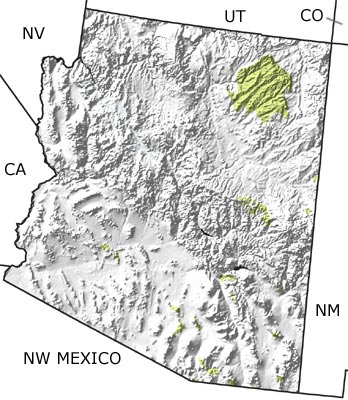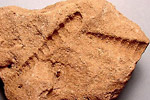Paleontology and geologyDuring the Cretaceous Period, southwestern Arizona stood relatively high and continued to dump sediment into low-lying areas to the east. Tectonic activity near the present-day Rocky Mountains helped to form the Cretaceous Western Interior Seaway, which extended into northeastern Arizona. Additional tectonic activity to the south opened an extension of the Gulf of Mexico, the Pedregosa Basin, in southeastern Arizona. Ammonites, oysters, rudist bivalves, and marine reptiles, such as plesiosaurs, ichthyosaurs, and turtles lived in these warm, shallow waters. Much of central Arizona consisted of low-elevation terrestrial habitats. The fossil record from these habitats includes conifers, angiosperms, and dinosaurs. This map indicates a concentration of Cretaceous rocks in the northeastern part of the state with additional deposits scattered across central Arizona. |





